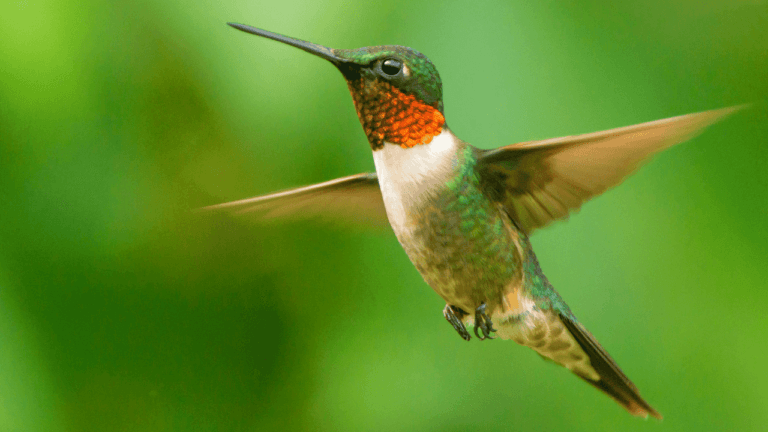Buddhist Prayer Techniques Buddhist Prayers Mantras and Mudras for Mindfulness

Welcome to our guide on Buddhist prayer techniques. In this article, we will explore the various meditation practices and mindfulness techniques that make up the rich tapestry of Buddhist prayers. Specifically, we will delve into the power of mantras and mudras, the different types of Buddhist prayers, their purpose, and who Buddhists pray to. Whether you’re new to Buddhism or looking to deepen your spiritual practice, this article will provide you with valuable insights and techniques to incorporate into your daily life.
Prayer has long been an integral part of Buddhist traditions, offering practitioners a way to cultivate inner peace, connect with their spiritual essence, and develop positive qualities. By engaging in specific Buddhist prayer techniques, individuals can tap into their inner potential for mindfulness and deepen their spiritual connection.
Key Takeaways:
- Buddhist prayer techniques encompass various meditation practices and mindfulness techniques.
- Mantras and mudras are powerful tools used in Buddhist prayer.
- Buddhist prayers serve the purpose of cultivating mindfulness, inner peace, and spiritual growth.
- Buddhists pray to Buddhas and bodhisattvas as sources of inspiration.
- Through prayer and dedicated practice, individuals can tap into their own inner potential for mindfulness and compassion.
The Power of Prayer in Buddhism
Prayer holds immense significance within the realm of Buddhism, offering practitioners a means to connect with their inner selves while cultivating positive qualities and fostering a profound sense of interconnectedness with all beings. Buddhist prayer techniques encompass various practices that contribute to mindfulness and the development of spiritual qualities, such as visualization exercises, breath awareness, and focusing on specific intentions.
The Role of Visualization Exercises
Visualization exercises play a crucial role in Buddhist prayer techniques, enabling practitioners to deepen their spiritual connection and enhance their mindfulness practice. By vividly imagining sacred objects, divine beings, or ideal qualities, individuals can activate their imagination and tap into their inner wisdom. This practice helps in cultivating a focused and serene state of mind, allowing practitioners to develop a deeper understanding of the interplay between their thoughts, emotions, and actions.
Breath Awareness: A Path to Mindfulness
Breath awareness occupies a central place in Buddhist prayer, serving as a powerful tool for cultivating mindfulness and anchoring oneself in the present moment. By directing their attention to the natural rhythm of their breath, practitioners can observe the flow of sensations and thoughts that arise, fostering a non-judgmental and compassionate attitude towards their inner experiences. This practice not only strengthens the capacity for focused attention but also nurtures a heightened sense of self-awareness and acceptance.
“Breath is the bridge which connects life to consciousness, which unites your body to your thoughts.”
– Thich Nhat Hanh
By integrating visualization exercises and breath awareness into their prayer practice, Buddhists can harness the transformative power of prayer to cultivate mindfulness, develop positive qualities, and deepen their spiritual connection. These techniques serve as vital tools for nurturing inner peace, promoting personal growth, and aligning with the interdependent nature of existence.
| Technique | Description |
|---|---|
| Visualization Exercises | Imagining sacred objects, divine beings, or ideal qualities to deepen spiritual connection and enhance mindfulness. |
| Breath Awareness | Directing attention to the natural rhythm of the breath to cultivate mindfulness and self-awareness. |
| Specific Intentions | Focusing on particular qualities, aspirations, or intentions to guide prayer and personal growth. |
Types of Buddhist Prayers Techniques
Buddhist prayers encompass a variety of practices that serve as powerful tools for cultivating mindfulness and spiritual growth. In this section, we will explore three types of Buddhist prayers: mantra repetition, loving-kindness meditation, and walking meditation.
1. Mantra Repetition
Mantras are sacred phrases or sounds that are repeated during meditation to invoke specific qualities and cultivate mindfulness. By chanting mantras, practitioners can focus their minds, quiet their thoughts, and deepen their connection to the present moment. Common mantras include “Om Mani Padme Hum” and “Gate Gate Paragate Parasamgate Bodhi Svaha.”
2. Loving-Kindness Meditation
Loving-kindness meditation, also known as metta meditation, is a practice that focuses on generating compassion and goodwill towards oneself and others. Practitioners repeat phrases or affirmations such as “May I be happy, may I be healthy, may I live with ease” while cultivating a genuine sense of love and kindness towards all beings. This practice helps develop empathy, patience, and a deeper understanding of interconnectedness.
3. Walking Meditation
Walking meditation is a form of meditation in motion that allows practitioners to cultivate mindfulness while walking. It involves bringing attention to each step and breath, focusing on the sensations in the body, the movement of the feet, and the surrounding environment. Walking meditation can be practiced indoors or outdoors, providing an opportunity to integrate mindfulness into daily activities and enhance overall awareness.
By exploring and incorporating these different types of Buddhist prayers into daily practice, individuals can deepen their spiritual journey, enhance their mindfulness, and cultivate positive qualities such as compassion, generosity, and inner peace.
The Purpose of Buddhist Prayers
Buddhist prayers serve multiple purposes. They can help practitioners cultivate mindfulness, develop inner peace, and foster spiritual growth. Through prayer, individuals can deepen their connection with the divine, find solace in challenging times, and seek guidance and inspiration on their spiritual journey.
Prayer is a powerful tool in Buddhist practice, allowing individuals to quiet their minds and focus their attention. By reciting mantras or engaging in other mindfulness techniques, practitioners can enter a state of deep concentration and awareness. This level of mindfulness helps to bring clarity and calmness to the mind, fostering a sense of inner peace.
“Prayer is not asking. It is a longing of the soul.”_Mahatma Gandhi
Beyond developing inner peace, Buddhist prayers also serve as a means of spiritual growth. Through prayer, practitioners can strengthen their connection to the divine and deepen their understanding of themselves and the world around them. They can seek guidance, inspiration, and wisdom from the enlightened beings of the Buddhist tradition.
Furthermore, Buddhist prayers can provide solace and comfort in times of difficulty. When facing challenges or experiencing pain, individuals can turn to prayer as a source of support and healing. It offers a way to find solace, connect with a higher power, and draw strength from within.
Overall, the purpose of Buddhist prayers is to enable practitioners to cultivate mindfulness, develop inner peace, and foster spiritual growth. Through prayer, individuals can tap into their inner selves, connect with the divine, find solace in challenging times, and seek guidance and inspiration on their spiritual journey.
Stay tuned for the next section, where we will explore the role models and sources of inspiration that Buddhists pray to.
Who Do Buddhists Pray to?
Buddhists find solace and inspiration in their prayers to Buddhas and bodhisattvas, who serve as role models on the spiritual path. While these enlightened beings do not possess the power to solve all of our problems or fulfill material desires, their example and teachings guide practitioners in overcoming personal suffering and cultivating positive qualities.
By emulating the virtues and qualities exhibited by these spiritual figures, Buddhists strive to develop compassion, wisdom, and mindfulness in their own lives. The Buddhas and bodhisattvas serve as sources of inspiration, demonstrating the potential for transformation and growth that exists within every individual.
“Just as a lotus blooms amidst muddy waters, the Buddhas and bodhisattvas illuminate the path of liberation in a world filled with suffering.”
Through prayer, Buddhists establish a spiritual connection with these revered figures, seeking their guidance, blessings, and protection on their spiritual journey. While the focus of prayer is not on asking for personal favors or material gain, it is about deepening one’s understanding of the Dharma and cultivating a sense of interconnectedness with all beings.
Buddhists look to the Buddhas and bodhisattvas as compassionate beings who embody virtue and wisdom. Their prayers serve as reminders of the potential for growth and liberation within themselves, encouraging practitioners to manifest these qualities in their own lives.
| Buddhas | Bodhisattvas |
|---|---|
| Gautama Buddha | Avalokiteshvara (Guanyin) |
| Maitreya Buddha | Manjushri |
| Amitabha Buddha | Ksitigarbha |
| Vairocana Buddha | Samantabhadra |
The Seven-Limb Prayer
The Seven-Limb Prayer is a widely practiced Buddhist prayer that encompasses various aspects of devotion, gratitude, and dedication. It provides a comprehensive framework for practitioners to express their reverence, cultivate positive qualities, and connect with the spiritual path.
Prostration: Bowing with Reverence
One of the limbs of this prayer is prostration. Through the physical act of bowing, practitioners show deep respect and surrender to the wisdom and compassion of the Buddhas and bodhisattvas. Prostration is a profound gesture that symbolizes humility and the willingness to let go of one’s ego.
Offerings: Cultivating Generosity
Offerings form an integral part of the Seven-Limb Prayer. Practitioners make symbolic offerings such as flowers, incense, and light, as a way to cultivate generosity and express gratitude for the teachings and guidance received. By offering these objects, one develops the virtue of generosity and acknowledges the interconnectedness of all beings.
Admission of Mistakes: Cultivating Accountability
The Seven-Limb Prayer also includes admitting mistakes and shortcomings. This is a practice of self-reflection, where practitioners honestly acknowledge their negative actions, thoughts, and emotions. By recognizing and taking responsibility for their mistakes, individuals can develop a greater sense of accountability and strive for personal growth.
Rejoicing in Positive Actions: Generating Joy
Another limb of the prayer is rejoicing in positive actions, both one’s own and those of others. This practice involves appreciating and celebrating acts of kindness, compassion, and wisdom. By rejoicing in virtuous deeds, practitioners generate a powerful sense of joy and inspiration, which fuels their commitment to further cultivate positive qualities.
Requesting Teachings: Seeking Guidance
Requesting teachings is an essential aspect of the Seven-Limb Prayer. Practitioners humbly ask the Buddhas and bodhisattvas for guidance and wisdom, seeking instruction on the path of awakening. This limb reflects the sincere desire to learn, grow, and deepen one’s practice, fostering a receptive and open mindset.
Dedicating Positive Actions: Benefiting All Beings
The final limb of the prayer is dedication. Practitioners dedicate the positive energy and merit they have accumulated through their practice to the benefit and liberation of all beings. This selfless act of dedication cultivates a sense of interconnectedness and compassion towards all living beings, reinforcing the aspiration for the well-being and enlightenment of all.
Buddhism and Self-Responsibility
Buddhism places a strong emphasis on self-responsibility and self-transformation. While prayers in Buddhism offer guidance, inspiration, and support, the ultimate responsibility for overcoming suffering and cultivating positive qualities lies with the individual practitioner. Through constructive actions and ethical behavior, Buddhists can create the causes for happiness and cultivate a mindful and compassionate way of life.
| Self-Responsibility in Buddhism | Constructive Actions |
|---|---|
| Buddhism encourages individuals to take responsibility for their own spiritual development and transformation. | Engaging in positive actions and virtuous behavior is essential for personal growth and cultivating a harmonious society. |
| Buddhists understand that they have the power to shape their own destinies through their thoughts, words, and actions. | By practicing generosity, kindness, and compassion, individuals contribute to the welfare of others and create positive karma. |
| Prayers serve as a source of inspiration and guidance, but it is up to each practitioner to implement the teachings and transform their lives. | Acting with integrity, honesty, and mindfulness allows Buddhists to align their actions with their spiritual aspirations. |
Self-transformation is a fundamental aspect of Buddhism, and it requires conscious effort and dedication. Through introspection, meditation, and the cultivation of virtuous qualities, individuals can change their negative patterns of thoughts and behavior, leading to personal growth and inner peace.
Constructive actions are an integral part of the Buddhist path. By engaging in acts of kindness, practicing generosity, and showing compassion towards all beings, Buddhists create positive ripples in the world, contributing to the well-being of themselves and others. These actions are considered instrumental in the process of self-transformation and the attainment of ultimate enlightenment.
“Your work is to discover your world and then with all your heart give yourself to it.” – Buddha
Conclusion
Buddhist prayer techniques offer a transformative approach to enhance meditation practices and connect with one’s inner potential. By drawing inspiration from the revered Buddhas and bodhisattvas, practitioners can unlock their innate mindfulness, compassion, and wisdom. Through dedicated prayer and ongoing practice, individuals can cultivate a profound sense of inner peace and contribute to the well-being of all beings.
These prayer techniques serve as powerful tools for self-transformation and personal growth. By engaging in Buddhist prayer, individuals tap into a rich source of inspiration that ignites their mindfulness and propels them on a spiritual journey of self-discovery. The practice of mindfulness, cultivated through prayer, enables practitioners to fully engage with the present moment and find solace amidst life’s challenges.
Embracing Buddhist prayer techniques is an invitation to delve into the depths of one’s own consciousness, nurturing a deep connection with the divine. Through prayer, practitioners can actualize their inner potential and awaken the latent qualities of compassion, wisdom, and mindfulness. By integrating these practices into their daily lives, individuals can experience a profound shift in their perception and relate to the world with greater awareness and empathy.
In the pursuit of mindfulness and spiritual growth, Buddhist prayer techniques are a valuable resource that empowers individuals to embark on a transformative journey of self-discovery. Through prayer, practitioners establish a profound connection with their inner selves, tap into their innate inspiration, and unlock their inner potential for mindfulness and compassion. By incorporating prayer into their daily practice, individuals can cultivate a deep sense of inner peace and manifest their intention to bring about positive change in the world.














